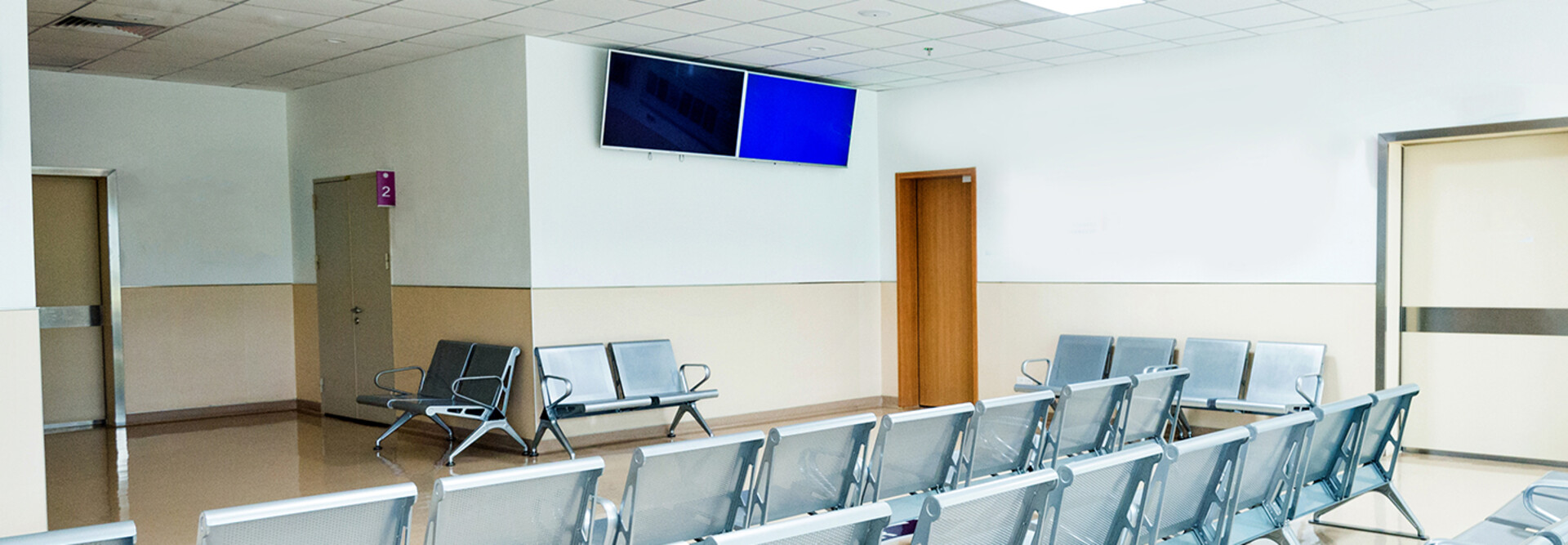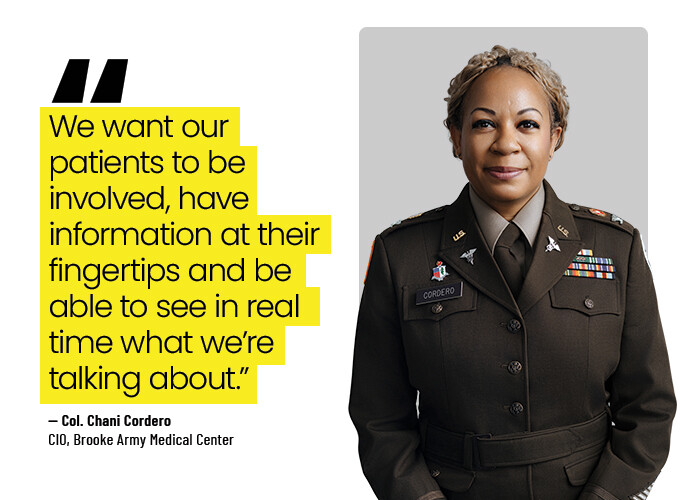The Department of Veterans Affairs provides healthcare at 1,380 health facilities across the country, including 170 VA Medical Centers and 1,193 outpatient sites. And while these hospitals and clinics vary in size and technological sophistication, the VA seeks to provide a unified and improved patient experience at all of them using technology.
Digital displays are one way the VA is transforming patients’ experiences throughout their healthcare journey. These displays relay important health information, support navigation at medical facilities and provide updates about VA healthcare benefits and medical innovations.
Throughout VA health facilities, as well as those operated by the Defense Health Agency and other government agencies, display technologies of all kinds are designed to increase trust and transparency with veterans and their families and provide them with information they can use to improve their care, both in and outside the hospital setting.
These range from video walls in lobbies to TVs in waiting rooms that display treatment information, displays that offer educational content and more.
“It’s done in such a way that you could ignore it if you wanted to, but if you needed to get that information, you could,” MaryBeth Goodman, clinic director of the Steven A. Cohen Military Family Clinic at Alaska Behavioral Health, says of the displays in the clinic’s lobby. “It’s a low-distress-tolerance situation to be able to really help and educate the client about what their experience is going to be.”
Click the banner below to learn how to create patient rooms ready for the future of care.
VA Uses Displays to Inform Patients
At VA facilities, digital displays are used in hospital environments, including patient waiting rooms and lobbies. The agency uses a range of displays, including Planar digital displays.
Patients and visitors use digital interactive maps to help them more easily navigate hospital complexes. Displays are also used to show estimated wait times and procedure status.
Displays often promote patient education, treatment details and other health benefits as well. Patients use displays to view news, weather and infotainment content, which the agency has determined helps reduce perceived wait times for patients and visitors at VA hospitals.
The VA also uses displays to show content from the Veterans News Network, or VNN. The agency’s Institute for Learning, Education and Development uses its satellite broadcasting and media distribution infrastructure to distribute VNN programming to patient waiting rooms and lobbies in VA facilities nationwide.
The programming is veteran-centric and includes educational and entertainment content “specifically tailored to meet veterans’ needs and add value to their patient waiting room experience,” says Terrence Hayes, the agency’s deputy assistant secretary for public and intergovernmental affairs.
“VNN programming is strategically aligned with VA’s and VHA’s top healthcare priorities, ensuring that it informs veterans of changes to their healthcare benefits and VA’s latest healthcare innovations,” he says.
During a visit to the Washington, D.C., VA Medical Center, a 65-year-old female veteran, who remained anonymous to protect patient privacy, said the VNN channel should “be on all VA TVs. It offers valuable content that helps veterans, unlike opinionated news channels that can add stress.”
Brooke Army Medical Center Keeps Patients Involved in Their Care
Brooke Army Medical Center, a DHA facility outside of San Antonio, uses the technology in a variety of settings, including a video wall of 25 Haivision displays in the “medical mall” area, where patients might be waiting for the pharmacy or a radiology appointment, says BAMC CIO Col. Chani Cordero.
Leveraging Haivision’s CoolSign digital signage platform, BAMC’s leaders can use the wall to display any information they want patients to know, Cordero says. There are also wall-mounted TVs throughout the facility that display everything from information about flu season to security protocols.
BAMC uses a patient queuing application called Q-Flow, which includes a crawl of information at the bottom of the display, to let patients know when they will be seen, according to Cordero.
9.1 million
The number of veterans enrolled in the VA healthcare program
Source: va.gov, “Veterans Health Administration: About VHA,” Jan. 20, 2025
She says BAMC is testing and preparing to demo a new electronic display in its dining facility that will show menus. “So, the nutrition care team and dieticians are able to update the menu instead of the old-school, ‘here’s your paper menu’ at the window,” she says.
Cordero sees BAMC patients as tech-savvy consumers, and displays keep them engaged in their healthcare.
“Our patients understand that they’re an integral part of their care, and we push that at BAMC,” she says. “We want our patients to be involved, have information at their fingertips and be able to see in real time what we’re talking about.”
That includes everything from informational lessons on smoking cessation or the importance of childhood immunizations. “For us, it is being able to continue the journey of patient education so that the patients are informed about the care that’s available, but also for them to be active in their care,” she says.
UP NEXT: What are smart hospitals, and how are they improving patient care?












